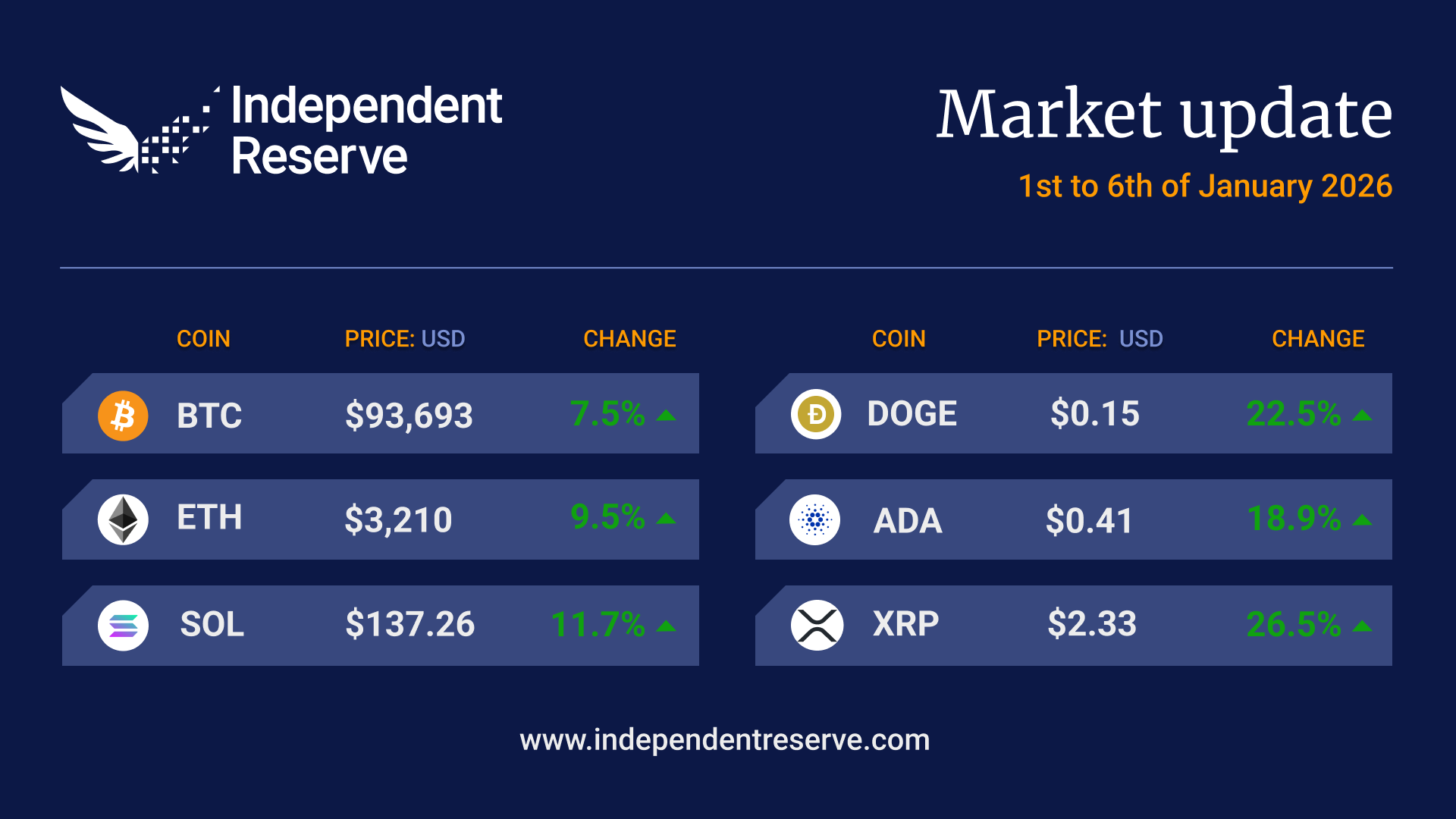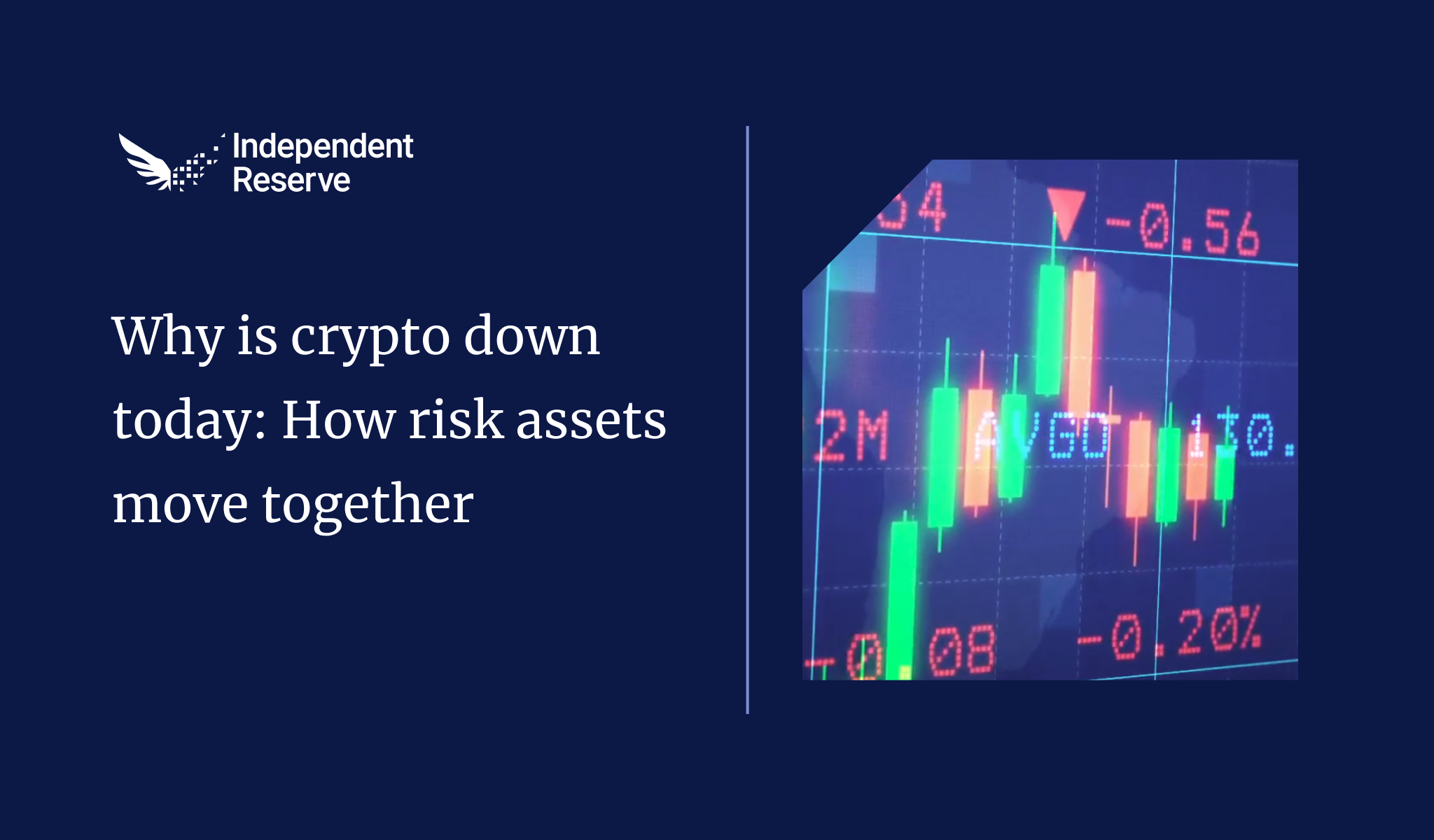In Markets
It hasn’t been a great start to 2022, with Bitcoin essentially reversing an entire year of gains to be back in similar territory to January 2021. Bitcoin plunged on the weekend following an internet outage in Kazakhstan and signs the Federal Reserve was becoming hawkish. It dipped below the psychological US$40K (AU$55.7K) mark earlier today, with Ethereum falling below US$3K (AU$4.18K). Overall crypto markets have lost US$1 trillion (AU$1.4T) since the all-time high in November. At the time of writing Bitcoin was down 12% for the week just above AU$58,100 and Ethereum had lost 21% and was trading just under AU$4,300. Cardano lost 18%, Ripple (-14%), Polkadot (-24%) and Dogecoin (-18%). Bitcoin’s RSI fell below the May 2021 crash, making it the most oversold since the March 2020 pandemic crash. The supply in profit is around 66%, similar to July last year. Some hope this means the bottom is in. After dipping to 10, the Crypto Fear and Greed Index is now at 23, or Extreme Fear.
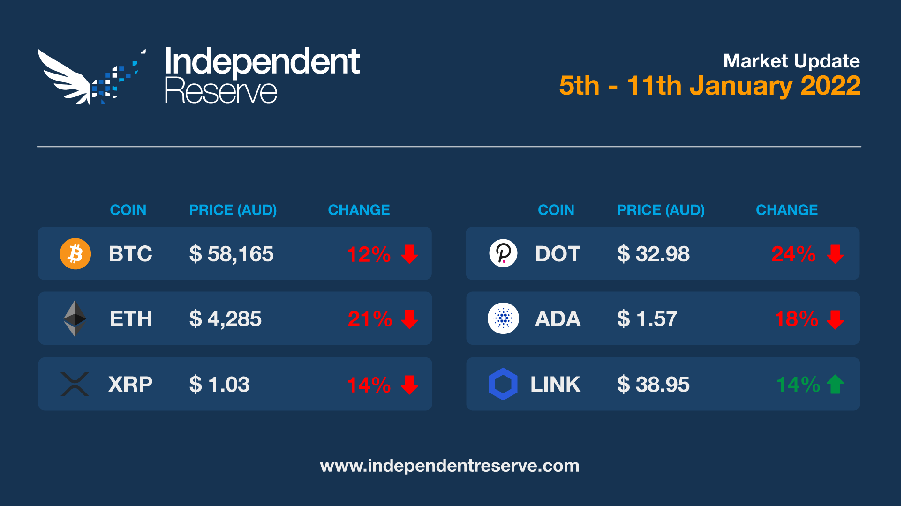
From the IR OTC Desk
The beginning of the New Year has historically been a quiet period for the Reserve Bank of Australia (RBA), due to their lack of January policy meeting, and so far, this year has turned out to be no different. The key data points before their scheduled 1st February meeting include unemployment data (20th January) and inflation data (25th January). These data releases will prove critical to the tone of the February meeting – with the market now expecting the RBA to drop their weekly asset purchase policy (currently at AU$4bn per week) and provide additional guidance on the interest rate path for 2022.
In the US, things could not be more different. The release of the December Federal Open Market Committee (FOMC) Minutes indicated that members feel it will be appropriate to begin reducing the size of the balance sheet “at some point after the first increase in the target range of the federal funds rate”. With futures pricing now suggesting that the first interest rate hike may be delivered as soon as March, expectations of when balance sheet runoff may begin has been aggressively moved forward. With notable US investment banks now forecasting four rate hikes for this calendar year, this week’s inflation release (12th January) will prove critical. Last week we saw the US employment rate for December move down to 3.9% (from 4.2% previous). It has been the combination of both the hawkish Fed minutes and the strong jobs release which have driven global equity market sentiment (particularly US tech stocks) and cryptocurrencies. Expect all US major data points to now exhibit greater amounts of volatility.
On the OTC desk, volumes have steadily been increasing following the New Year break. In general, flows have continued to be skewed to the sell side, with orders seeking to take advantage of additional liquidity pockets delivered by market rallies. With ETH/BTC moving back to the 100 DMA, and now well anchored in the (more recent) historic range, the relative value trade between BTC and ETH is less obvious. Market volatility continues to be topical, as increasing TVL in DeFi Option Vaults (DOVs), appear to be influencing implied volatility (a space to watch going forward). The correlation between cryptocurrencies and US tech stocks remains critical.
For any trading needs, please don’t hesitate to get in touch.
In Headlines
Bitcoin double whammy part one
Goldman Sachs released a note to investors tipping the Federal Reserve would hike interest rates four times this year in response to inflation which is predicted to top 7.1% in figures due to be released this week. The Fed is also expected to start shrinking the size of its US$8.8T (AU$12.3T) balance sheet. Former BitMEX CEO Arthur Hayes said in a blog, “This presents the setup for a severe washout, as the pernicious effects of rising interest rates on future cash flows will likely prompt speculators and investors at the margin to dump or severely reduce their crypto holdings.” Economist Alex Kruger was similarly gloomy, saying the Fed was moving from pumping US$120 billion (AU$167B) into the economy per month, to subtracting US$80B (AU$111B) from the economy each month. “Crypto assets are at the furthest end of the risk curve,” he wrote. “Just as they benefited from extraordinarily lax monetary policy, they suffer from unexpectedly tight monetary policy, as money shifts away into safer asset classes.”
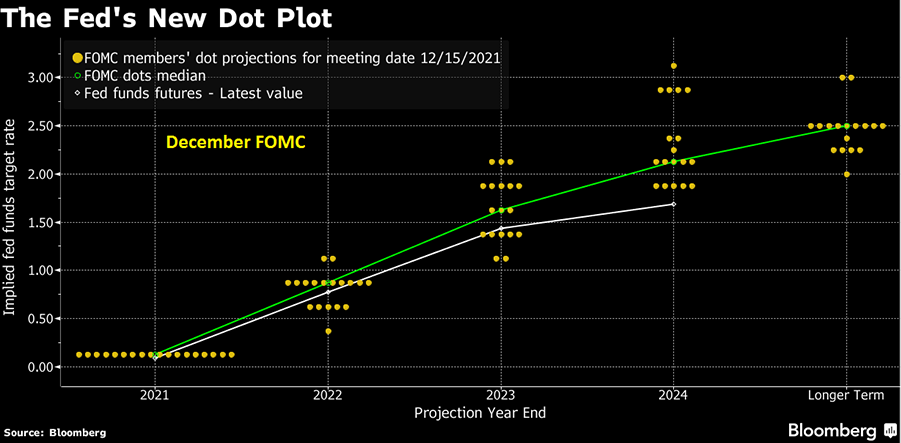
Bitcoin double whammy part two
Kazakhstan also threw a spanner in the works by shutting down the internet to deal with anti-government protests which tanked Bitcoin’s hash rate by 13.4% and the price soon followed. Many Chinese miners fled there following the local ban and the country now has the second-largest hashrate after the US. The hash rate has mostly recovered and is back around 192 EH/s.
Reasons to be cheerful part one
Bloomberg senior commodity strategist Mike McGlone isn’t worried though and believes Bitcoin is in a “consolidating bull market”. He’s tipping US$100K (AU$139K) BTC and US$5K (AU$7K) ETH this year. “Expectations for Federal Reserve rate hikes in 2022 may support a win-win scenario for Bitcoin vs. the stock market,” he wrote. “A reason to take back liquidity is the fact that the S&P 500 is the most extended above its 60-month moving average in over two decades. Stretched markets have become common, but commodities and Bitcoin appear to be early reversion leaders. It’s a question of bull-market duration, and we see the benchmark crypto coming out ahead.”
Reasons to be cheerful part two
A “silver lining” of any potential bear market is that “it may relieve some regulatory pressure” says the Head of Policy at the Blockchain Association Jake Chervinsky. He says the DeFi boom, yield farming and dog tokens and NFT crazes scared regulators who then rushed their regulatory responses. “To a degree, shrinking markets = lower risk = less focus,” he concluded.
PayPal’s stablecoin
Developer Steve Moser unearthed a series of clues in PayPal’s iOS code which he interpreted as the payments giant was looking to launch a stablecoin tied to the US dollar. The company confirmed the plan to Bloomberg and said it was very much willing to “work closely with relevant regulators to ensure a smooth process.”
Ethereum to account for 50% of all global transactions
Pantera Capital’s CIO Joey Krug told Bloomberg that Ethereum would become the backbone of the global financial system within one or two decades. “If you roll the clock 10 to 20 years, a very sizable percent, maybe even north of 50%, of the world’s financial transactions in some way, shape or form will touch Ethereum,” he said. Such a prediction is contingent on Ethereum being able to scale up to meet the demand. A report from JPMorgan noted that Ethereum was already losing its dominance in DeFi due to its current inability to scale.
Vitalik lays out some brain bending maths
Creator Vitalik Buterin this week proposed a new “multidimensional” Ethereum gas fee structure that calculates fees differently depending on the demands of different resources. “The scheme we have today, where all resources are combined together into a single multidimensional resource (’gas’), does a poor job at handling these differences,” he said in a blog post outlining the very complicated maths that underpins his proposal.
Bits and pieces
CoinDesk has formally joined legal proceedings between Tether and the New York AG’s office as part of its freedom of information request to get access to documents detailing the breakdown of Tether’s reserves. Searches for “sell Ethereum’ spiked 1,000% this week along with a 2,000% increase for “why has Ethereum gone down?” Solana was hit with another two slowdowns this week, which Solana Labs CEO Anatoly Yakovenko denied was related to DDoS attacks. According to Glassnode, 76% of the total circulating supply of Bitcoin has been moved to illiquid wallets with no history of spending.
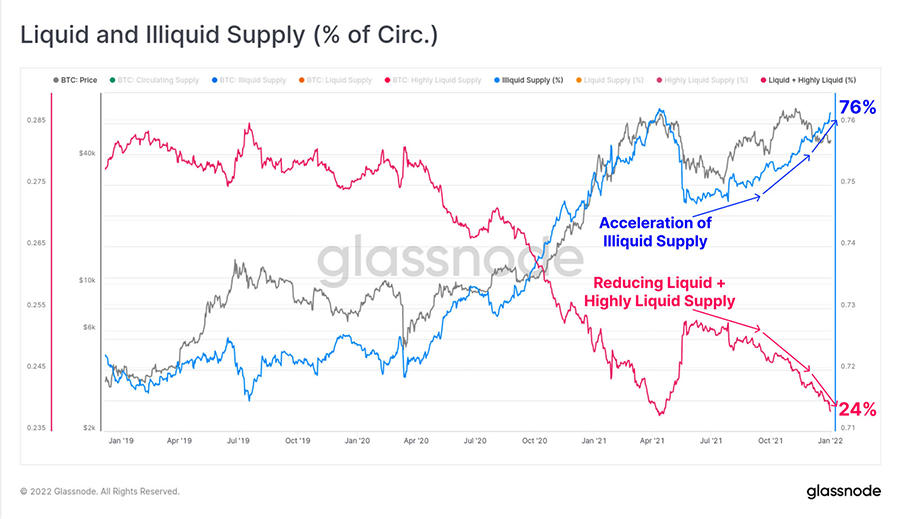
Single volcano to power Bitcoin City
President Bukele has announced that officials from El Salvador’s government will have the ability to use geothermal energy from one of the country’s inactive volcanoes to power their Bitcoin City project. Bukele stated a 90% probability of using the Conchagua volcano to supply 42 megawatts, which would be “enough to provide energy to the entire Bitcoin City”. To increase its production of geothermal power, El Salvador’s state-owned electrical company LaGeo has identified one site capable of producing 95 MW. If the power consumption of the city exceeds the volcano’s capacity, energy will be sourced from other sites. Inversely, any energy surplus will be used to mine Bitcoin to add to El Salvador’s repository. The aim is to create a fully functional city with jobs in tourism, construction, and engineering. Residents will reportedly pay no taxes on capital gains or payroll income at Bitcoin City.
Until next week, happy trading!

